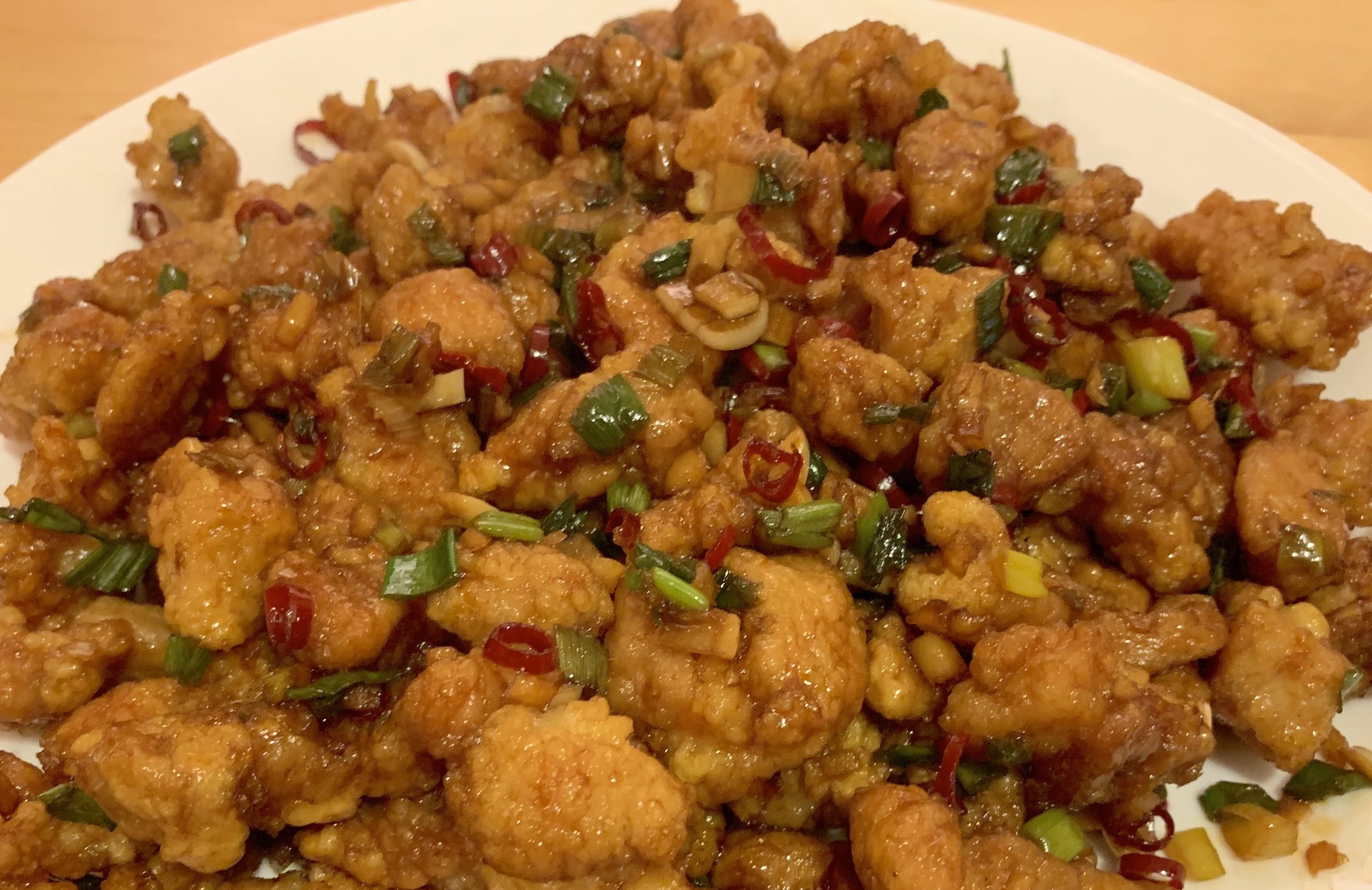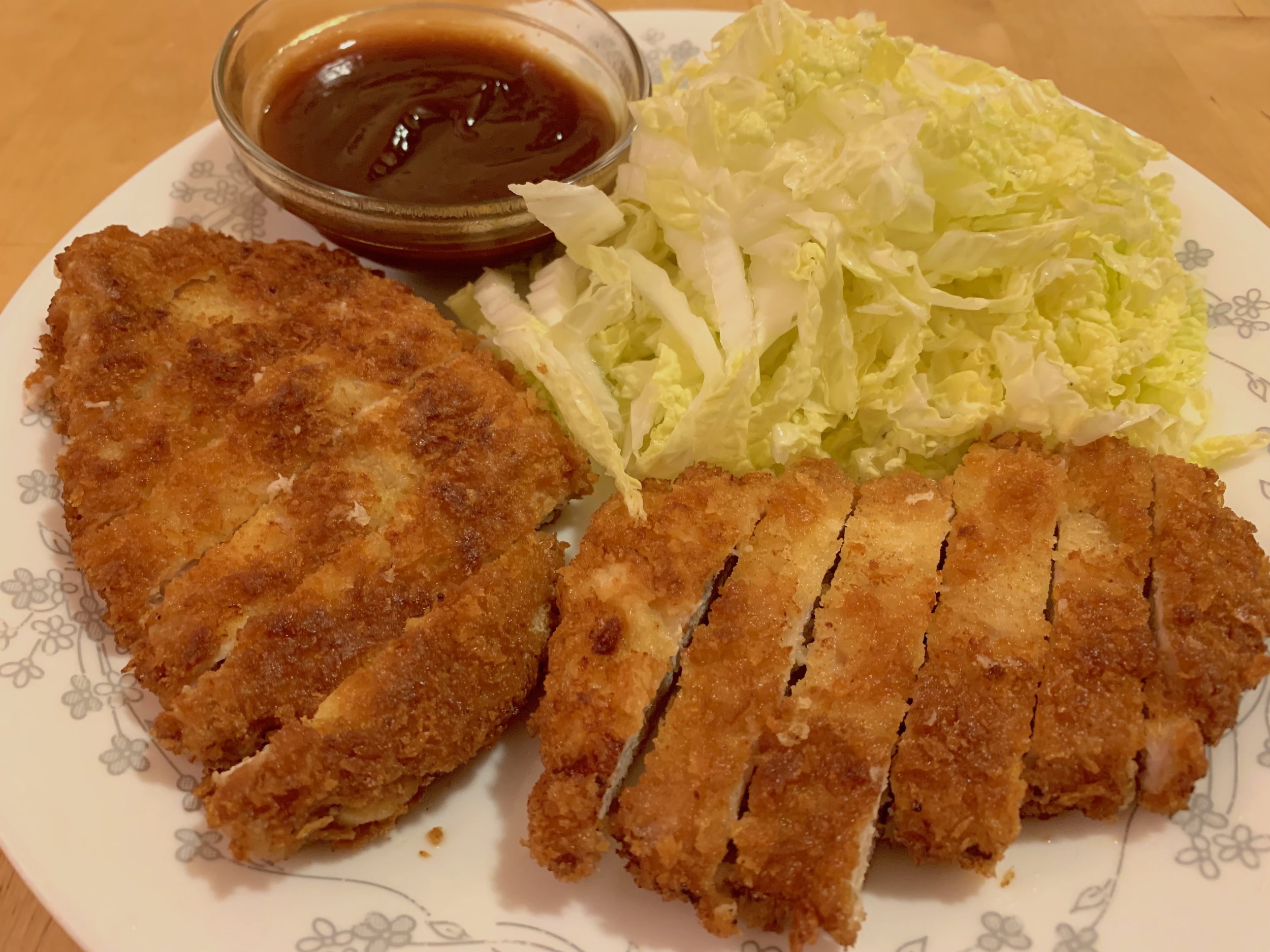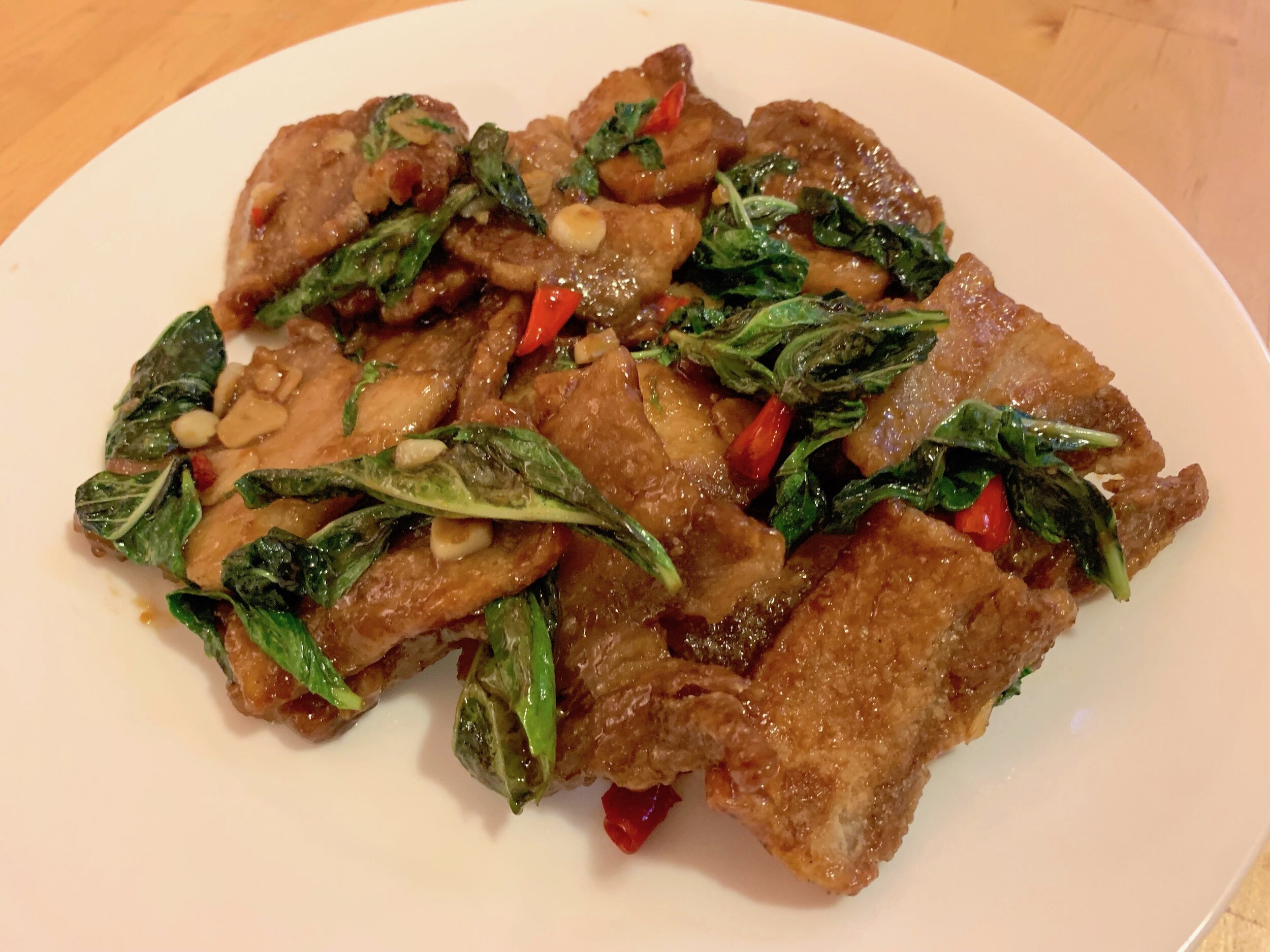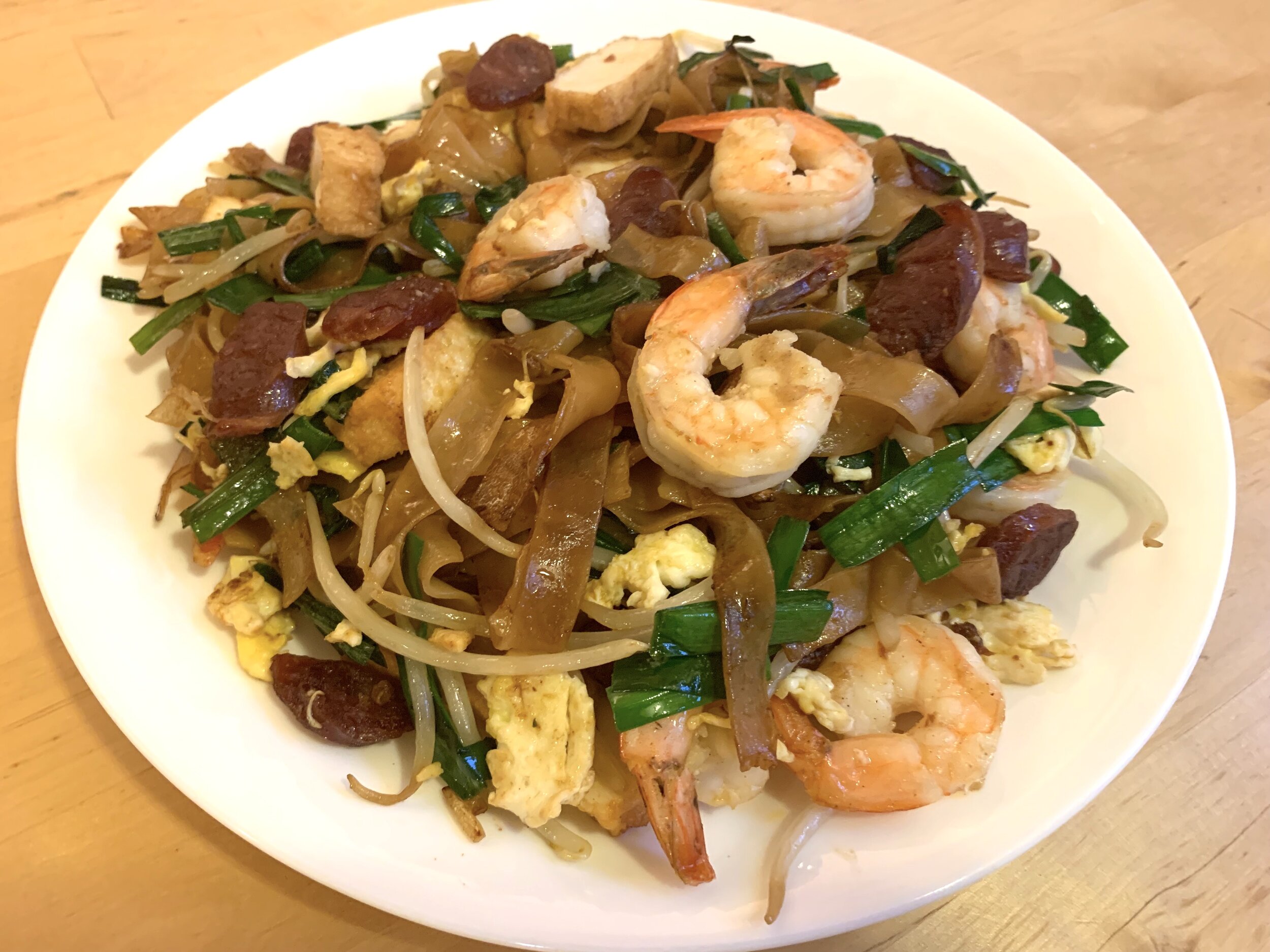Macadamia-Crusted Mahi-Mahi
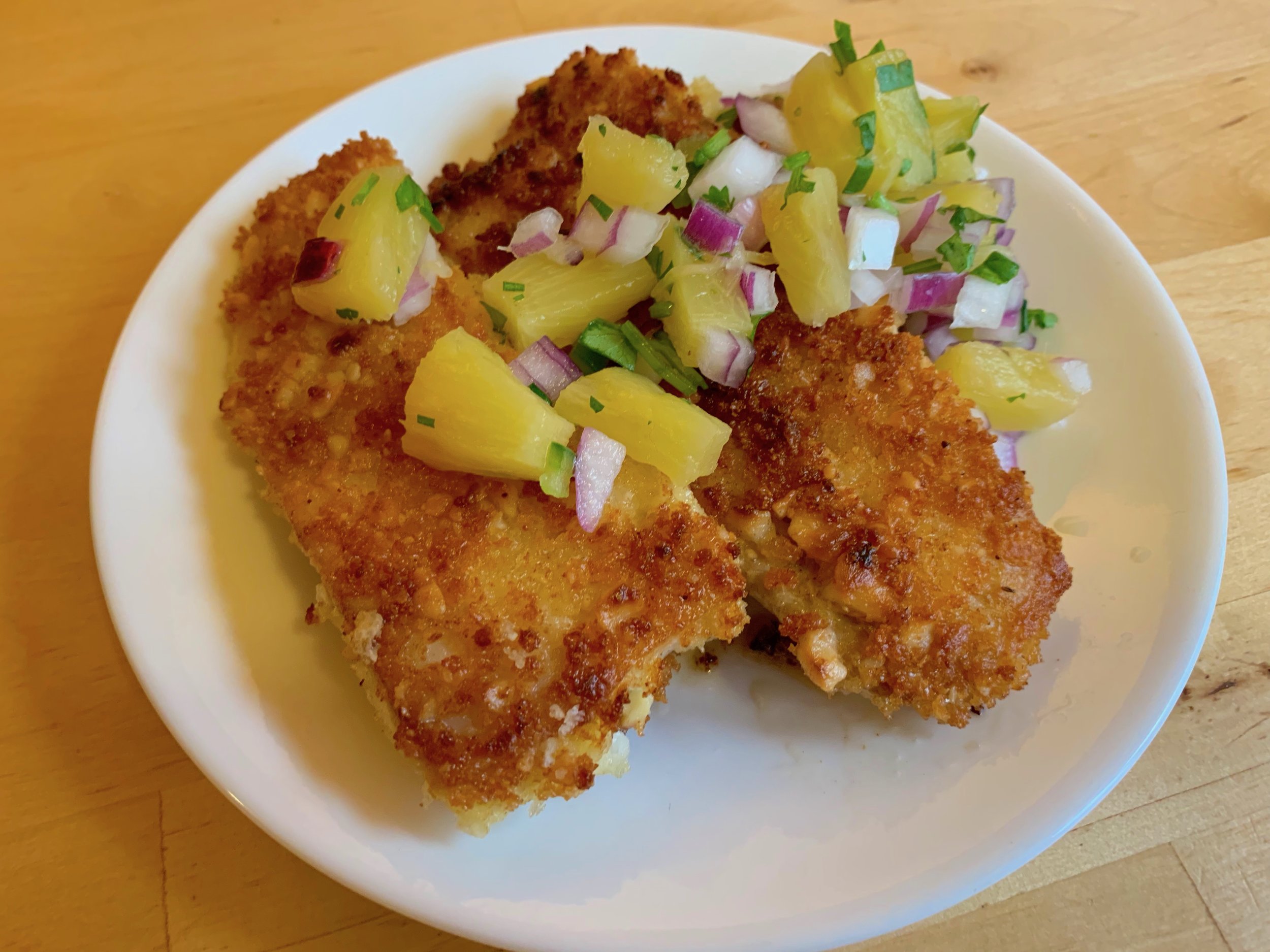
Mahi-mahi, also known as dolphinfish or dorado, can be found in temperate and tropical waters around the world. Mahi-mahi means “very strong” in Hawaiian [1], and are known to be swift surface swimmers, specializing in hunting flying fish. Mahi-mahi was commonly fished by Polynesians [2], and had been part of the Hawaiian diet since ancient times. The postwar economic boom saw the birth of the Hawaiian tourism industry, and chefs in Hawaii began showcasing local ingredients by pairing mahi-mahi with macadamia nuts and pineapples, both cultivated on the islands at the time, and macadamia-crusted mahi-mahi began appearing on hotel and restaurant menus in the 1960s. While some versions of this dish are oven-roasted, I find that pan frying gives the best results—a light, crunchy crust and tender, flaky fish.
Ingredients
1 lb mahi-mahi fillets
1 cup macadamia nuts
½ cup panko
1 egg
Salt
Vegetable oil
Begin by cutting the fish into approximately 2 inch by 5 inch pieces. Pat the pieces of fish dry, and season with salt. Next, it’s time to prepare the macadamia nuts [3]. We want the nuts to be coarsely ground, with a range of sizes. The largest pieces, however, should be no larger than ¼ of an inch. You can use a mortar and pestle for this. Another method is to place the nuts in a plastic zipper bag, work the air out of the bag, and then smash them with a rolling pin or heavy pan.
While this recipe works with both raw and toasted macadamia nuts, I prefer using raw macadamia nuts for this recipe, as the raw nuts are softer, giving a more uniform texture to the crust when being mixed with the panko. Raw macadamia nuts will also release more of their natural oils when cooked, infusing the entire crust with a nutty flavor. In a wide bowl, mix the macadamia nuts with the panko breadcrumbs. Together, they will form the crust of the fish. Do not substitute regular breadcrumbs for their panko cousins here—they are too dense for this application. The panko will help bind the macadamia pieces together, forming a solid crust when cooked.
Beat the egg to form an egg wash, and prepare a breading station—the raw fish, the egg wash, a plate with the breading mixture, and an empty plate to place the breaded fish pieces. Dip each piece of fish into the egg, coating both sides. Then place the fish into the breading mixture. The macadamia nuts will need some convincing to adhere, so gently press the fish into the panko and nut mixture. Flip the fish and repeat, breading both sides. This coating will be very fragile until cooked, so gently place the breaded fish on the final plate. Repeat with the other fish pieces.
When you’re ready to cook, heat 2 tablespoons of vegetable oil in a nonstick skillet over medium heat. When the oil is up to temperature, gently place the breaded fish pieces in the pan, laying away from you to minimize splattering. Once the fish is down, don’t move it until you are ready to flip! As the breading cooks, it will come together to form a solid crust. Fry the fish for 5 minutes on the first side, then flip carefully. Fry for an additional 5 minutes, or until the crust is golden brown and the mahi-mahi is fully cooked.
Serve the fish with tartar sauce or some pineapple salsa.
Substitutions
This preparation works well with other reasonably firm white fish, such as amberjack or tilapia.
[1] “Mahi” means strong in the Hawaiian language, and the name of this fish is an example of the morphological process of reduplication in linguistics. In this particular case, the repetition is a form of enhancement.
[2] Mahi-mahi fishing is still an important part of the cuisine and economy of many Polynesian nations. In French Polynesia, mahi-mahi is fished using a special type of boat, the poti manara, invented in the 1950s. Probably the closest thing the fishing boat world has to a fighter jet, the poti manara is a one-man, high-speed vessel which is steered with a joystick from a cockpit in the bow, leaving the fisherman’s other hand free to use a harpoon. This method of fishing has been likened to polo, and requires years of practice to master.
[3] Despite being associated with Hawaii, macadamia nuts are not native to the island. The macadamia tree is native to Australia, and is named after John Macadam, a Scottish-Australian chemist, doctor, politician, cabinet minister, and football umpire.
Recipe
Prep Time: 10 min Cook Time: 10 min Total Time: 20 min
Difficulty: 3/5
Heat Sources: 1 burner
Equipment: nonstick skillet, rolling pin or mortar and pestle
Servings: 4
Ingredients
1 lb mahi-mahi fillets
1 cup macadamia nuts
½ cup panko
1 egg
Salt
Vegetable oil
Instructions
1. Cut the mahi-mahi into 2 inch by 5 inch pieces, pat dry, and season with salt.
2. With a rolling pin or mortar and pestle, crush the macadamia nuts. Mix the nuts with the panko breadcrumbs in a wide bowl or plate.
3. Beat the egg to form an egg wash. Dip each piece of fish in the egg, coating both sides. Then gently press the fish into the panko and nut mixture, breading both sides. Repeat for each piece of fish.
4. Add two tablespoons of oil to a nonstick skillet over medium heat. When the oil is hot, place the breaded fish pieces in the pan. Fry the fish for 5 minutes per side, flipping once, or until the crust is golden brown and the mahi-mahi is fully cooked.
5. Remove from the heat and serve.










